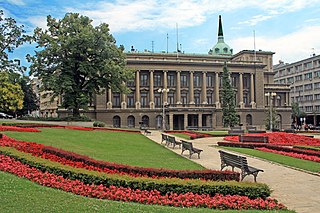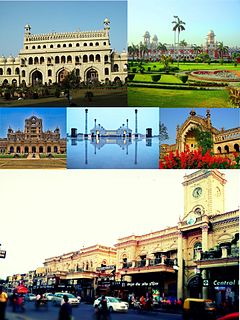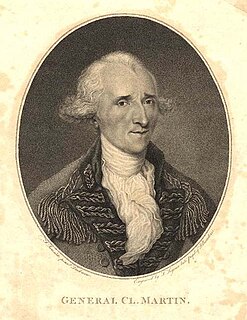
The Raj Bhavan, formerly known during British India as the Bangalore Residency, the Mysore State Residency, or, simply, the Residency, is the official residence of the Governor of Karnataka. It is located in the capital city of Bangalore, Karnataka. During Mysore Kingdom, the building was home to the Resident of the British Agency that was in subsidiary alliance with the Kingdom of Mysore.

Raj Bhavan is the official residence of the Governor of West Bengal, located in the capital city Kolkata. Built in 1803, it was known as Government House before the independence of India.

Raj Bhavan or Raj Bhawan is the official residence of the Governor of Bihar. It is located in the capital city of Patna, Bihar. The construction of building started in 1912 and was completed in 1917. It was designed by New Zealand-born architect Joseph Fearis Munnings.
Raj Bhavan and formerly Barnes' Court is the official residence of the Governor of Himachal Pradesh. It is located in the capital city of Shimla, Himachal Pradesh.
Raj Bhavan is the official winter residence of the Governor of Jammu and Kashmir. It is located in the Winter capital city Jammu, Jammu and Kashmir.
Raj Bhavan is the official residence of the Governor of Kerala. It is located in the capital city of Thiruvananthapuram, Kerala. Built in 1829 as Palace Guest house of Travancore Government Guest, this heritage structure hosts the present governor of Kerala is Justice (Retd) P Sathasivam.
Raj Bhavan is the official residence of the Governor of Madhya Pradesh. It is located in the capital city of Bhopal, Madhya Pradesh.
Raj Bhavan is the official residence of the Governor of Sikkim. It is located in the capital city of Gangtok, Sikkim. The present governor of Sikkim is Gangaprasad.
Raj Bhavan Uttarakhand or Uttarakhand Governor's House is the official residence of the Governor of Uttarakhand. Uttarakhand is one of the few Indian states which have two official buildings of Raj Bhavans. There are two buildings of Raj Bhavan in Uttarakhand. The first one is located in the capital city of Dehradun.
The second Raj Bhavan of Uttarakhand is situated in Nainital. The present Governor of Uttarakhand is Baby Rani Maurya.

Dilkusha is a residential colony in Lucknow, the capital city of Uttar Pradesh, India. Near the banks of the River Gomti, the colony has been the residence of government officials for more than a hundred years. Dilkusha is situated 2 km from Hazratganj in central Lucknow, and is close to amenities and schools such as Loreto and La Martiniere. Dilkusha means "my heart is happy".
Raja Balwant Singh College is located at Bichpuri, Agra, Uttar Pradesh, India. The college is affiliated to Dr. A.P.J. Abdul Kalam Technical University, Lucknow and Dr. B. R. Ambedkar University, Agra.
Tribhuvan Narain Singh was an Indian politician and Chief Minister of Uttar Pradesh. He remained Chief Minister from 18 October 1970 till 4 April 1971. Singh later served as Governor of West Bengal from the late 1970s until 1981. He was born and died in Varanasi, Uttar Pradesh. He also served as the Chairman of the Public Accounts Committee and as Union Minister of Industry and Steel.

Dilkusha Kothi is the remains of an eighteenth-century house built in the English baroque style in the quiet Dilkusha area of Lucknow in India. Today there are only a few towers and external walls as a monument, though the extensive gardens remain. The house was shelled during its involvement in the Lucknow siege in 1857 together with the Residency and the nearby school of La Martiniere.

The Government of Uttar Pradesh is a democratically elected state government in the North Indian state of Uttar Pradesh with the governor as its appointed constitutional head of the state by the President of India. The Governor of Uttar Pradesh is appointed for a period of five years and appoints the chief minister and his or her council of ministers, who are vested with the executive powers of the state. The governor remains a ceremonial head of the state, while the chief minister and his or her council are responsible for day-to-day government functions. The state of Uttar Pradesh's influence on Indian politics is paramount as it sends the largest number of members of parliament to both the Lok Sabha and the Rajya Sabha.

The Residency, also called as the British Residency and Residency Complex, is a group of several buildings in a common precinct in the city of Lucknow, Uttar Pradesh, India. It served as the residence for the British Resident General who was a representative in the court of the Nawab. The Residency is located in the heart of the city, in the vicinity of other monuments like Shaheed Smarak, Tehri Kothi and High Court Building.

The Peterhoff was a building in Shimla which has housed at least seven Viceroys and Governors General of India during the British Raj. It has been built in typical Tudor style - all wooden frames and shingled eaves.

Located in Lucknow, the Vidhan Bhavan is the seat of the bicameral legislature of the Indian state of Uttar Pradesh. The lower house is the Vidhan Sabha and the upper house is called the Vidhan Parishad or the. The Vidhan Sabha had 431 members until 1967, but now comprises 403 directly elected members and one nominated member from the Anglo-Indian community. The Vidhan Parishad has 100 members.

The second Raj Bhavan of Uttarakhand is situated in Nainital. In the pre-Independence era, Nainital served as the summer capital of United Provinces and this building, built like a Scottish castle was christened as the "Government House". Raj Bhavan was built by British as residence of Governor of then North West Province. The beginning of construction of Raj Bhavan was started in April 1897 and it took two years to complete. It is built on European pattern and based on Gothic Architecture. The designers of Raj Bhavan (Nainital) were Architect Stevens and the Executive Engineer FOW Ortel. After Independence it was renamed as Raj Bhavan.













